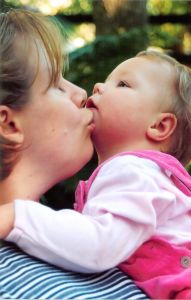Editor’s Note: This post was originally published on August 27, 2008, but I love the message it offers to parents about how positive discipline dovetails with responding with sensitivity in observing what underlying needs children may be expressing when they act out.
 Recently there has been a discussion about time-out technique on a Yahoo group. A mother was sharing about how effective she finds the time-out sessions to teach her 18 month old not to bite mommy. Lots of people were interested and wanted to learn more about the technique.
Recently there has been a discussion about time-out technique on a Yahoo group. A mother was sharing about how effective she finds the time-out sessions to teach her 18 month old not to bite mommy. Lots of people were interested and wanted to learn more about the technique.
I believe in gentle discipline. I remember reading an inspirational blog post by Angela White at Breastfeeding 123:
I talked to a friend who used what she called “time in.” Time in involved getting down on my daughter’s level and holding her if she wanted that, and talking about the kind of behavior that was acceptable and not acceptable. I realized that many times when my child was acting up, she was really looking for more attention from me. It was a lot better for both of us if I gave her positive attention in the first place, and refrained from negative attention like yelling and shaming.
My daughter has recently started pulling my hair. Every time she does this, I tell her that it hurts me and that it’s not okay to pull someone else’s hair.
I also paid attention to the times when she pulls my hair. The result is obvious: She’s either tired or sleepy. She wants more attention from me. Maybe she wants me to give her a hug, maybe she wants me to breastfeed her or maybe she wants me to play with me.
Had I used the time-out technique, she’d only be more upset.
I believe that by being respectful to our little ones — by questioning why they are behaving like this — we can sort out half of the problem. Time-outs may change their behavior, but they will not resolve the underlying problem or address our children’s needs.
